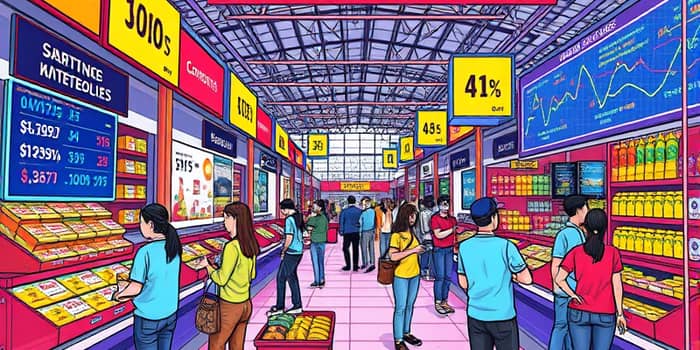
In today’s complex market environment, setting the right price has become an art and a science. Businesses must navigate a maze of cost pressures, shifting demand patterns, and technological disruptions to stay profitable and relevant. By blending data-driven insights with strategic creativity, companies can craft pricing approaches that resonate with consumers while safeguarding margins.
As we move deeper into 2025, pricing strategy remains central to maximizing profitability and maintaining competitiveness. Firms no longer view price as a static figure but as a dynamic lever that can be adjusted swiftly in response to market stimuli. Persistent economic headwinds—such as inflationary cost increases, evolving consumer expectations, and geopolitical tensions—have elevated the importance of persistent cost pressures and soft demand management.
Moreover, businesses are embracing layered scenario planning and agile adaptation, constructing “if-then” frameworks to anticipate and respond to varied outcomes. Instead of chasing perfect forecasts, they develop robust playbooks that accommodate sudden tariff changes, currency fluctuations, or unexpected demand spikes.
Several interrelated trends are redefining how companies set and adjust prices. First, the advent of sophisticated AI tools has fueled real-time data-driven price adjustments, enabling dynamic pricing across industries from airlines to e-commerce. These systems constantly analyze competitor moves, inventory levels, and consumer behavior to optimize price points.
Second, innovation is no longer confined to products; it underpins pricing itself. Organizations leverage innovation as a driver for premium pricing, introducing AI-powered features or sustainability credentials to justify higher price tiers. Third, heightened consumer savvy compels brands to refine their psychological pricing tactics—using charm pricing, decoy options, and tiered bundles to influence purchase decisions.
Understanding the strengths and limitations of different pricing models is essential. The table below summarizes the most prevalent strategies in 2025:
Putting theory into practice requires meticulous calculation and experimentation. For instance, a cost-plus model might look like this:
• Material costs: $5, labor: $20, overhead: $10 → subtotal $35. Desired markup of 300% produces a final price of $140.
In competition-based pricing, if rival SaaS products list at $19.99–$29.99 monthly, you could position yours at $18.99 for penetration, $24.99 for parity, or $30.99 for premium positioning.
Dynamic pricing engines ingest real-time booking or inventory data to fine-tune rates multiple times per day. Similarly, psychological and value-based pricing tactics—such as using $19.99 instead of $20—have been shown to boost conversions by up to 24% in key categories.
A disciplined market analysis underpins every successful pricing initiative. Begin with deep-dive research into your target segments, assessing their price elasticity and purchase drivers. Next, map out the competitive landscape, cataloging direct and indirect substitutes.
Continuously monitor macroeconomic indicators—interest rate changes, tariff announcements, and currency movements—to spot emerging cost shifts. Solicit direct feedback through surveys, focus groups, and pilot launches to validate willingness to pay.
As we project into the latter half of the decade, several forces will continue shaping pricing paradigms. Tariffs and supply chain disruptions will drive companies toward demand variability and global economic challenges solutions, such as diversified sourcing and flexible pricing tiers. Soft consumer demand in mature markets will push firms to emphasize value creation through loyalty programs, exclusive experiences, and subscription bundles.
Meanwhile, AI will evolve from an efficiency tool into a strategic growth catalyst. Organizations will deploy AI-driven synthetic market modeling to simulate pricing outcomes across hundreds of hypothetical scenarios, optimizing both product design and go-to-market pricing in unison. This convergence of data science and pricing acumen will unlock unprecedented revenue potential.
Recent case studies underscore the tangible benefits of advanced pricing strategies. Retailers harnessing AI-based optimization platforms report up to a 10% lift in profit margins without eroding customer loyalty. Service providers employing dynamic and value-based models have achieved double-digit revenue growth in mature segments.
Moreover, strategic use of psychological pricing has yielded conversion rate improvements of 15%–24% in controlled experiments. Ultimately, businesses that blend rigorous market analysis, cutting-edge technology, and creative pricing narratives will emerge as leaders in the competitive landscape of 2025 and beyond.
References













